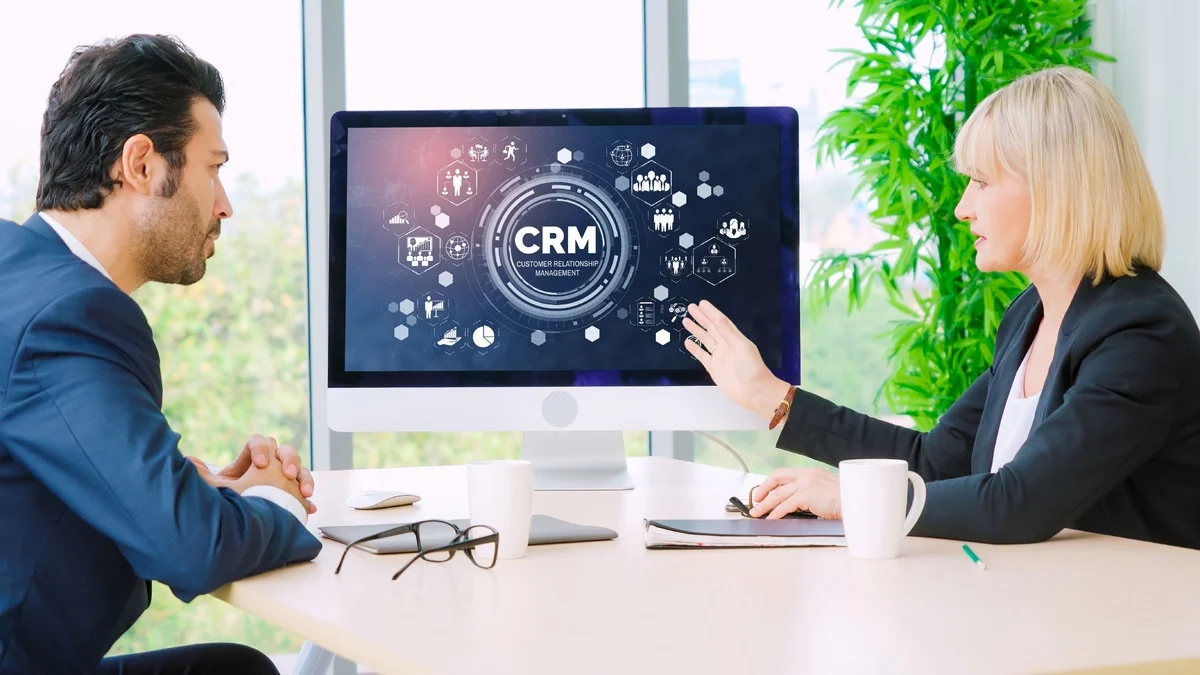Nexa Lab Blog – Customer Relationship Management (CRM) is a strategic approach that enables businesses to manage and nurture interactions with current and potential customers.
At its core, the CRM process consists of a series of stages designed to foster customer interactions and increase loyalty. But how do you get started with this staged process? What is the first step that businesses must take to reach the first stage of the CRM cycle?
Today we’ll look at the first step of the CRM cycle, including the technique and how CRM software can help you with it.
Let’s get started!
The First Step of the CRM Cycle: Customer Acquisition
Businesses need new customers to grow and succeed. Without new clients or consumers, companies can’t improve. Customer acquisition is important for any business to grow and create new things, according to the zendesk.com blog post. However, before you jump into customer acquisition, you need to have a clear understanding of your target market and ideal customer profile.
This will help you tailor your marketing efforts effectively and increase the chances of acquiring valuable customers. So, what is the checklist for identifying your target market? Here’s how.
Identifying Potential Customers
Identifying potential customers is the cornerstone of successful customer acquisition.
This process involves understanding who your ideal customers are and where to find them. Defining specific characteristics such as demographics, interests, and behaviors creates a detailed customer profile.
This profile helps in targeting the right audience, ensuring that your marketing efforts are directed towards individuals who are more likely to convert into loyal customers.
Target Market Analysis
Target market analysis is a critical component of identifying potential customers.
Researching and analyzing the market helps in understanding the needs, preferences, and challenges of your target audience. This analysis assists in segmenting the market into smaller, manageable groups, allowing for more personalized and effective marketing strategies.
Understanding your target market enables you to tailor your messaging and offers to resonate with potential customers, increasing the likelihood of acquisition.
Lead Generation Strategies
Lead generation is the process of attracting and converting prospects into leads, individuals who have shown interest in your products or services.
Effective lead generation strategies are essential for a successful customer acquisition process. These strategies may include content marketing, search engine optimization (SEO), pay-per-click (PPC) advertising, and social media campaigns.
Implementing a combination of these tactics captures the attention of potential customers and encourages them to engage with your brand.
The CRM cycle is a journey, not just a single step. Uncover the 5 essential objectives that will guide your path and unlock the full potential of customer relationship management for your business.
Learn More: CRM Objectives: 5 Essential Goals to Drive Business Success
Techniques for Effective Customer Acquisition
1. Digital Marketing Strategies
Digital marketing plays an important role in customer acquisition.
It encompasses a wide range of tactics, including SEO, PPC, content marketing, and social media advertising. Each of these strategies contributes to increasing your brand’s visibility online and attracting potential customers. A well-rounded digital marketing approach ensures that your business reaches the right audience at the right time, maximizing the chances of converting prospects into customers.
2. Inbound and Outbound Marketing
Inbound marketing focuses on attracting customers through valuable content and experiences tailored to their needs.
This strategy includes blogging, social media marketing, and SEO, aiming to draw customers in rather than pushing messages out. Outbound marketing involves proactive outreach through methods such as email marketing, telemarketing, and direct mail.
Combining inbound and outbound marketing strategies creates a balanced approach to customer acquisition, catering to the different preferences and behaviours of your target audience.
3. Social Media Engagement
Social media platforms offer a powerful channel for engaging with potential customers.
Creating and sharing relevant content, interacting with followers, and running targeted ad campaigns help build a strong social media presence. This presence aids in attracting and retaining customers, as it provides a platform for direct communication and relationship building.
Engaging with your audience on social media also allows you to gather valuable insights into their preferences and feedback, informing your marketing strategies.
4. Email Marketing Campaigns
Email marketing remains one of the most effective techniques for customer acquisition.
Crafting personalized and relevant email campaigns nurtures leads and guides them through the sales funnel. Segmenting your email list based on customer behavior and preferences ensures that your messages resonate with the recipients, increasing the chances of conversion.
Regularly analyzing the performance of your email campaigns and optimizing them based on data-driven insights can significantly enhance your customer acquisition efforts.
How CRM Software Can Enhance Customer Acquisition
CRM software can significantly streamline and enhance your customer acquisition efforts.
CRM software provides a centralised platform for managing customer data and allows for keeping track of interactions and engagements with potential customers. This visibility makes sure that no lead falls through the cracks and that all prospects receive timely follow-ups.
Softwares also automates various marketing tasks, such as sending personalised email campaigns, tracking the performance of marketing strategies, and analysing customer data to refine targeting. This automation not only saves time but also increases the efficiency and effectiveness of your marketing efforts.
Additionally, CRM systems offer powerful analytics and reporting tools that provide insights into customer behaviours and preferences. These insights help in tailoring your marketing strategies to better meet the needs of your target audience, enhancing the likelihood of successful customer acquisition.
Integrating CRM software into your customer acquisition strategy creates a more organised, data-driven approach that boosts your ability to attract and convert potential customers.
The first step of the CRM cycle is crucial, but it’s just one part of a larger journey towards building strong customer relationships. Explore how analytical CRM software can guide you through the entire CRM lifecycle, from initial contact to long-term loyalty, and unlock the full potential of your customer interactions.
Learn More: How Analytical CRM Software Drive Your Business Growth? 7 Benefits to Know
Conclusion
Understanding and effectively implementing the first step of the CRM cycle, customer acquisition, is crucial for the success of your business. CRM software further enhances these efforts, providing tools for data management, automation, and analytics. Investing in these strategies ensures a steady flow of new customers, setting the stage for ongoing growth and success in your efforts.
Investing in CRM software is a smart move for any business looking to improve sales, marketing, and customer service. But to get the most out of your CRM, it needs to work with your other tools.
Nexalab’s App Fusion can help you connect your CRM with other essential platforms, like PSA software, for example. This means you get a complete view of your customer data, automate repetitive tasks, and personalise your customer interactions. It’s a solution that helps you get the most out of your CRM investment. Contact Nexalab today to explore how App Fusion can drive your business forward.




